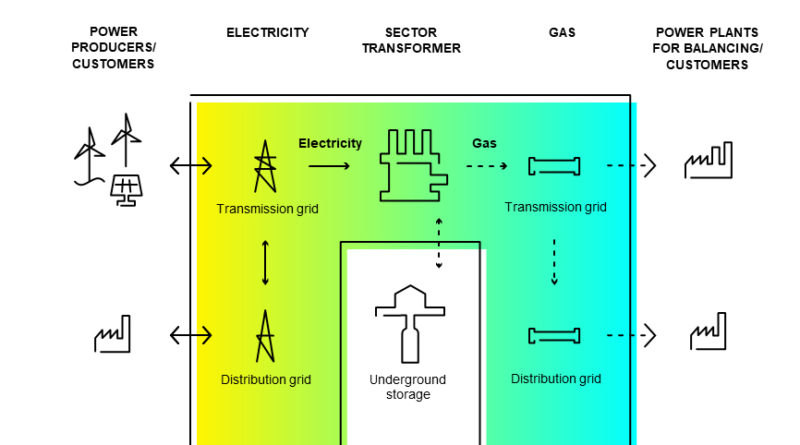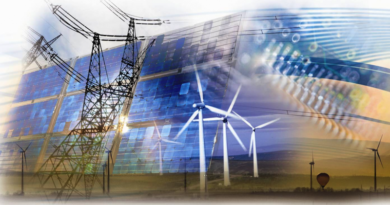
Power-to-gas – a system’s perspective
Limiting global warming is key to mitigate climate change. However, this can only be achieved by reducing our greenhouse gas emissions and ultimately becoming carbon-neutral. That in turn requires a radical transformation of our energy system.
One essential cornerstone within this context is the smart integration of a hydrogen system into our overall energy system. Hydrogen is the promising energy carrier due to its ability to decarbonise applications that cannot be electrified directly (e.g. furnaces or chemical processes). In that regard, we need to identify how to maximise the CO2-reducing effect of this new system, while minimising the cost to the European economies at large. However, an inappropriately designed hydrogen system can even increase an economy’s greenhouse gas emissions.
If the European transformation proves its success in practice, the concept will con- tribute to the achievement of global climate goals. This will keep Europe at the forefront of the global energy transition. Henceforth, what do we need to accomplish?
Introducing a hydrogen system is not an end in itself.
First, we have to recognise that the goal of implementing a hydrogen system is necessarily subordinated to the overarching objective of decarbonising the European economy.
If planned appropriately, the system can play a key role in bridging industrial production and climate protection. In fact, renewable energy sources (RES) will have to replace the use of fossil energy sources and feedstock in all sectors.
Therefore, the introduction of a hydrogen system will only make any sense at all if the capacity of RES is consistently expanded.
From a systemic point of view, electricity which is suitable for use in electrolysers cannot be directly integrated into the electricity system. This can happen for two reasons: (A) there are no recipients for green electricity in the electricity system; (B) the electricity cannot be transported to users for technical reasons. At any given time, a decision needs to be made about the use to which green electricity should be put, in order to achieve the greatest decarbonisation efficiency – we refer to this concept as an electricity-gas switch. Applying this principle, an electrolyser can replace a conventional steam reformer, thereby decreasing the system’s CO2 emissions.
A kilowatt hour of hydrogen produced by using fossil-fuelled electricity in an electrolyser would result in at least twice as much greenhouse gas emissions compared to the alternative. We therefore always need to evaluate the effect on the entire energy system in consideration of substitution chains for both conventional and new technologies.
Conversion of infrastructure and end applications comes first.
A transformation pathway needs to be found that links the current separate transport systems for electricity and gas. Partially retrofitting today’s gas infrastructure from natural gas to hydrogen will be beneficial: reducing the impact on the natural environment and on the population will boost social acceptance of the steps necessary for the energy transition. This transformation pathway has to be economically efficient and should reduce CO2 emissions at every stage of the way. Therefore, the potential of electrolysis is limited at the beginning. Beyond 2030, we will need system-serving electrolysers in the gigawatt class. This technology is not yet available, so a technological ramp-up and therefore initial projects are required now.
Additionally, converting the natural gas infrastructure to the transport of pure hydrogen must begin at an early stage. This will be essential to enable CO2-intensive industries to be capable of decarbonisation at all. In the transformation phase, already existing steam reformers should be connected to the hydrogen infrastructure and be used as hydrogen sources. In this way a hydrogen market can be established. Decarbonisation itself can then take place in sync with the expansion of RES and electrolysis, additionally with the import of green energy. Nothing else is currently happening in the electricity system. This approach should also be applied to the hydrogen system.
Converting end applications is as time-consuming as converting infrastructure, on account of long investment cycles.
That is why end applications, like furnaces or chemical processes, need to be made H2-ready or converted to using hydrogen as soon as possible. The transition will also provide an opportunity for industries to face their own decarbonisation and therefore survival.
Gradually, the system’s capacity of electrolysis and storage increase.
The expansion of RES will steadily increase the quantity of suitable green electricity. At the same time, flexible technologies will be integrated into the electricity system. One of these is electrolysis that couples the electricity and gas systems. Subsequently, the gas system needs to become flexible because of the inalterable hydrogen supply from electrolysis. In analogy to the electricity system, conventional production and storage facilities are able to disengage energy demand and supply. As long as hydrogen demand exceeds the supply of green hydrogen, steam methane reforming can ensure security of supply within the gas system. Therefore, and in contrast to the past, steam reformers need to be operated variably and system-oriented – equivalent to conventional power plants within the energy sector. As the amount of green hydrogen in the energy system increases, steam reformers can gradually be shut down.




